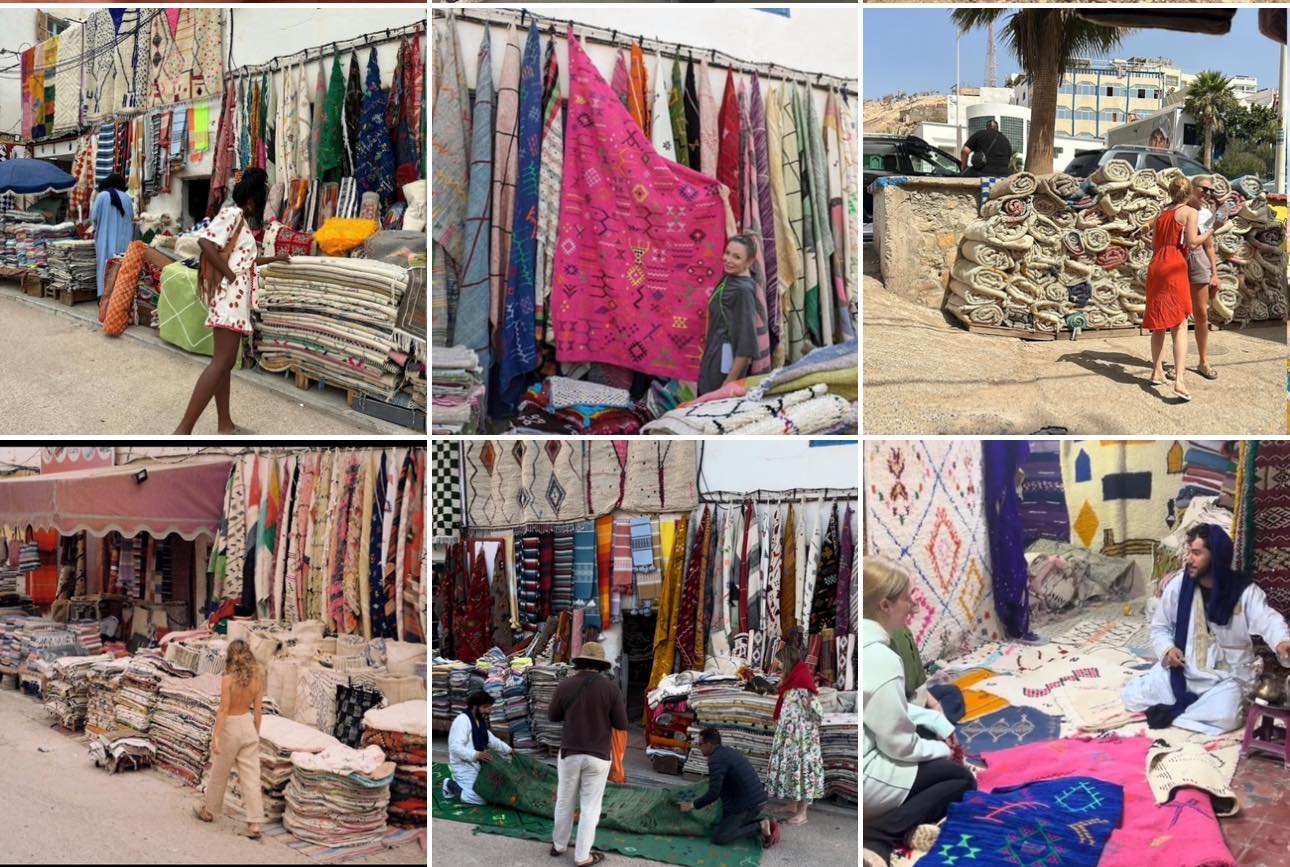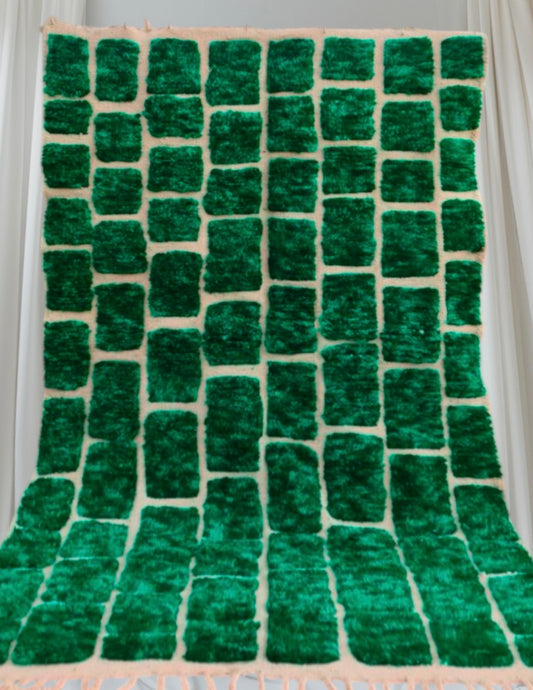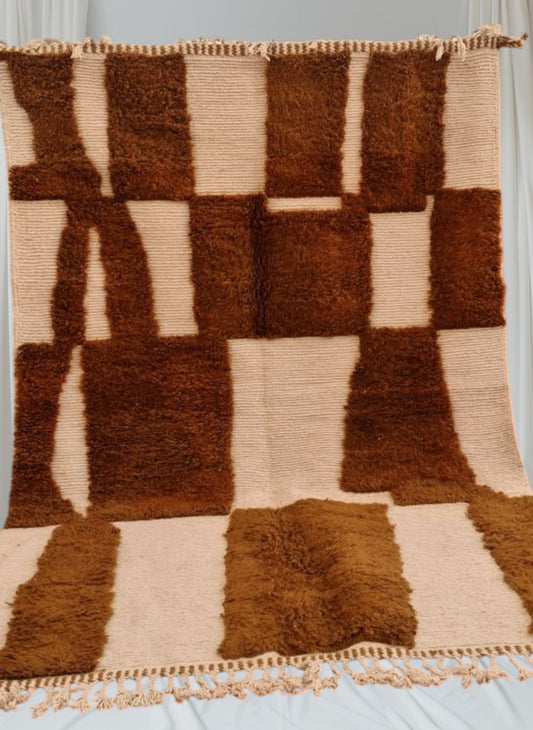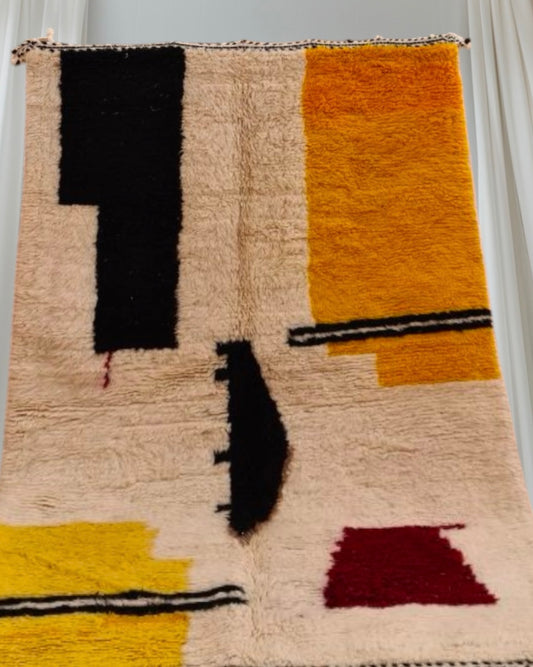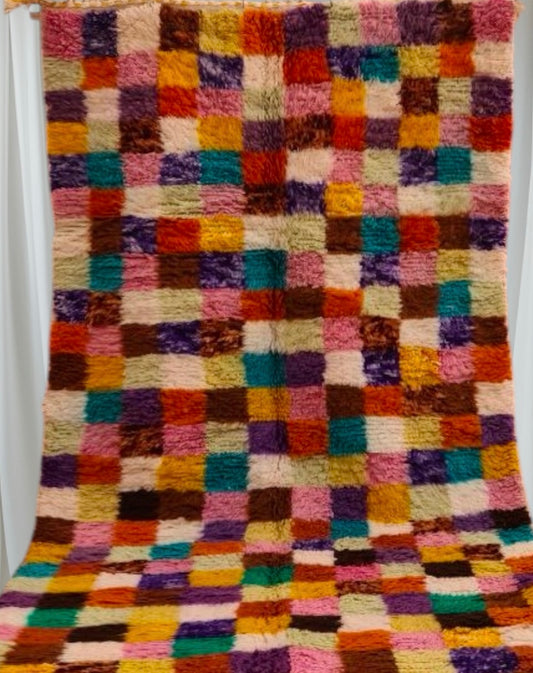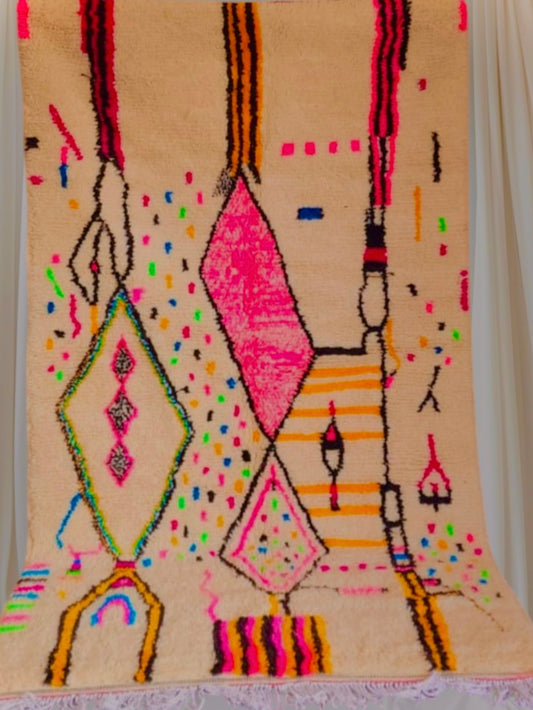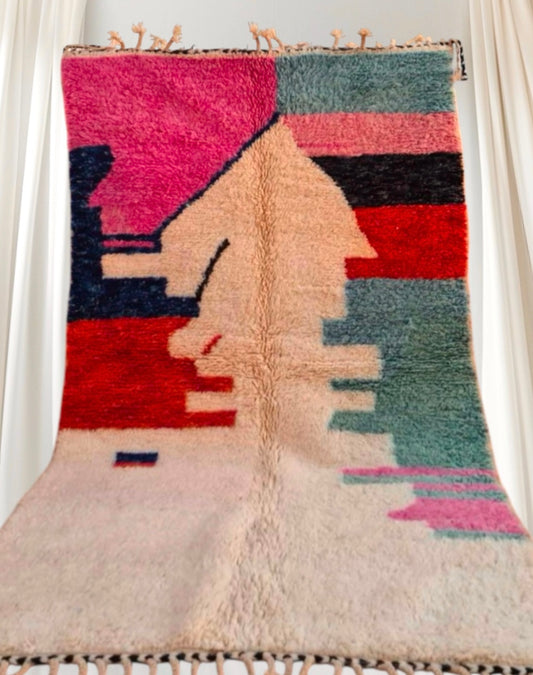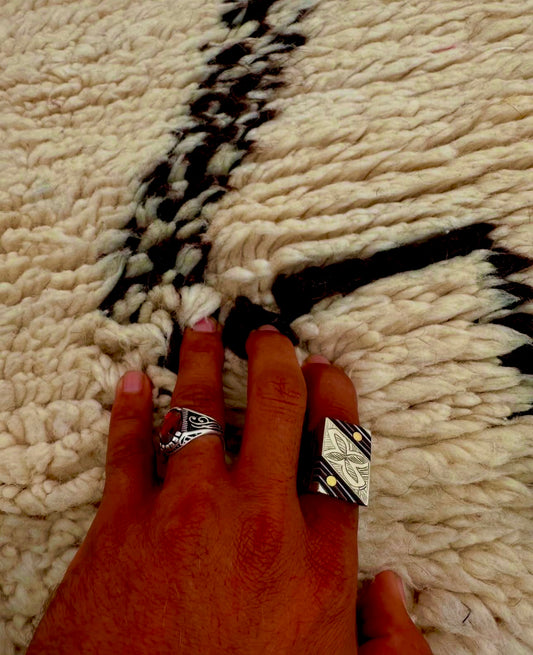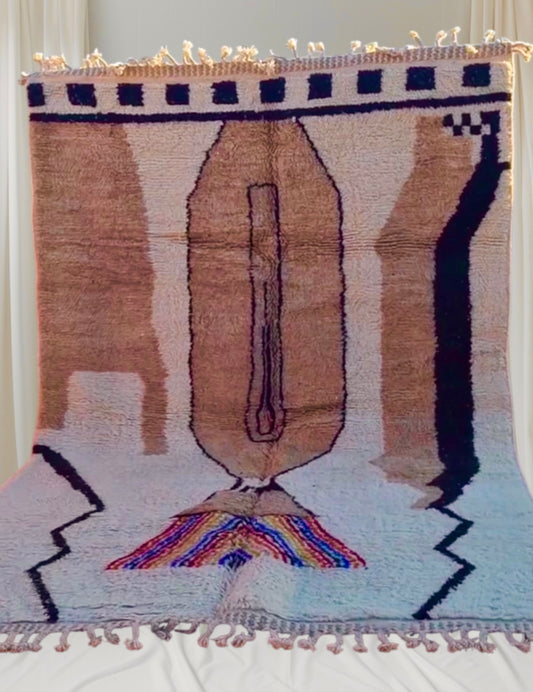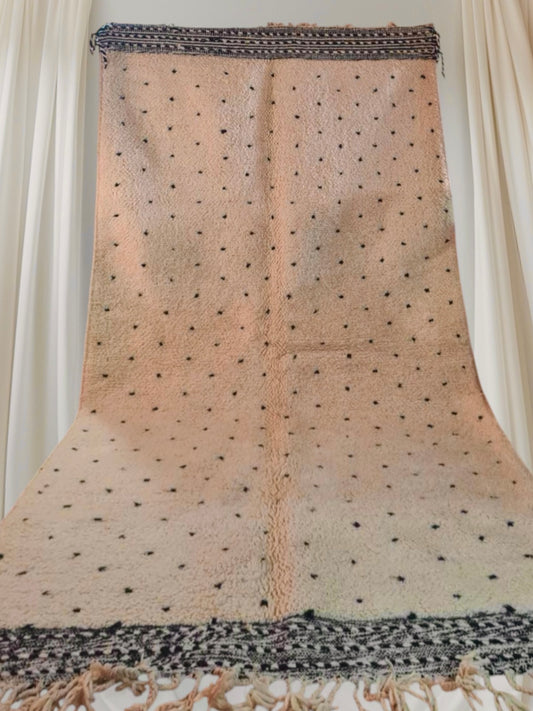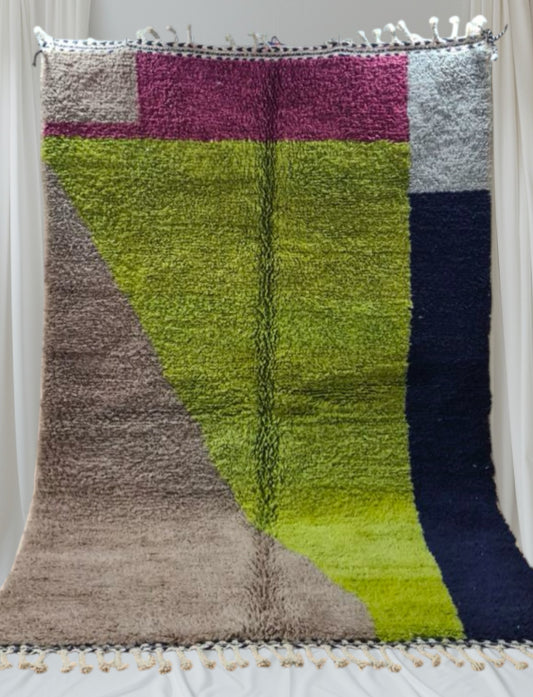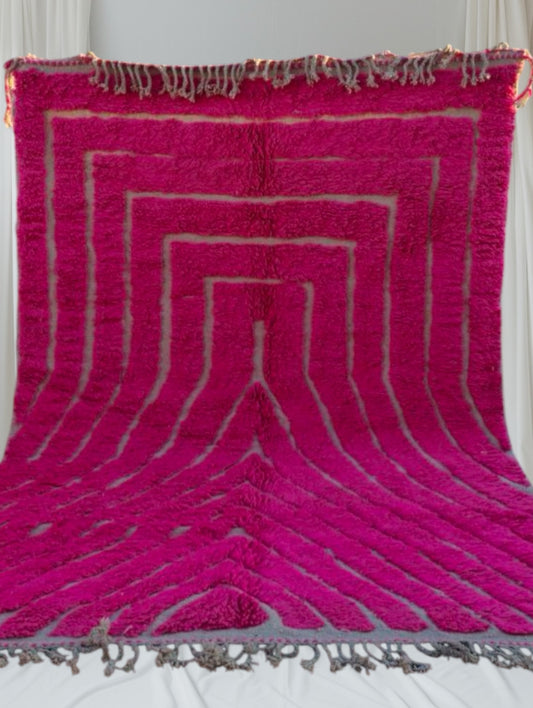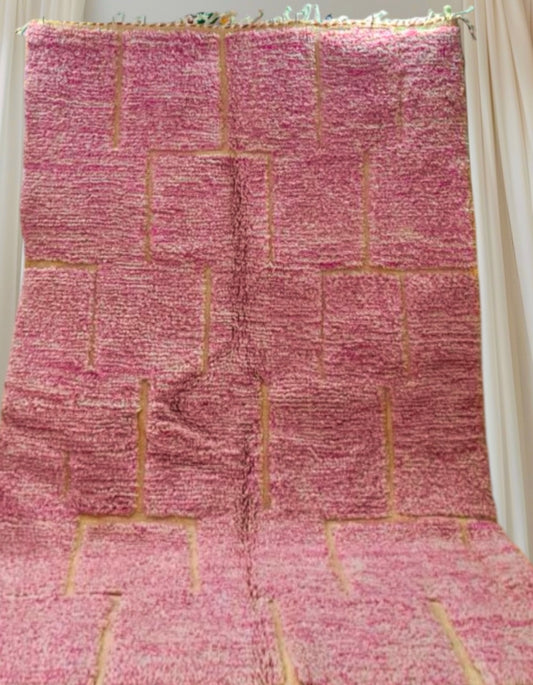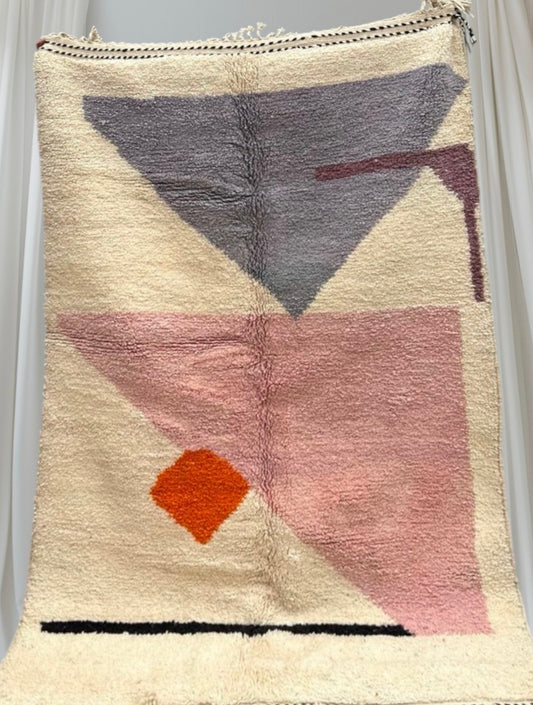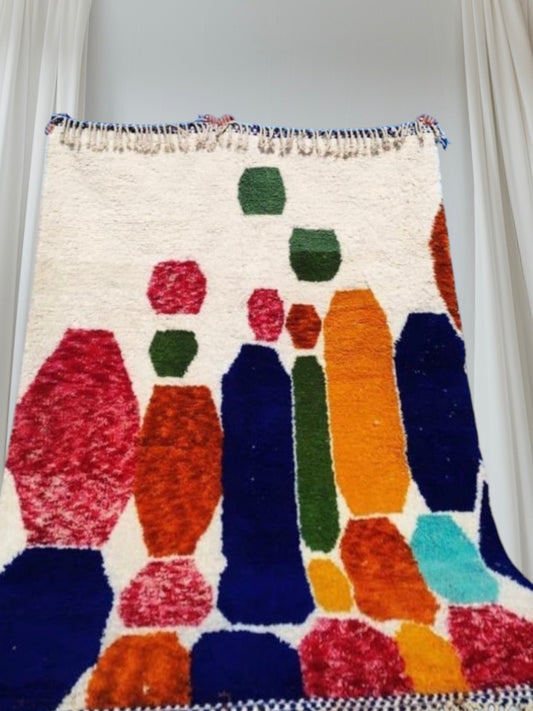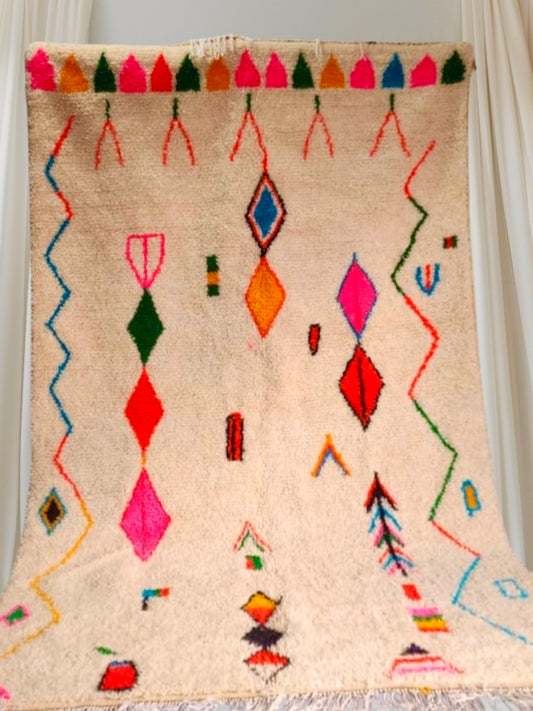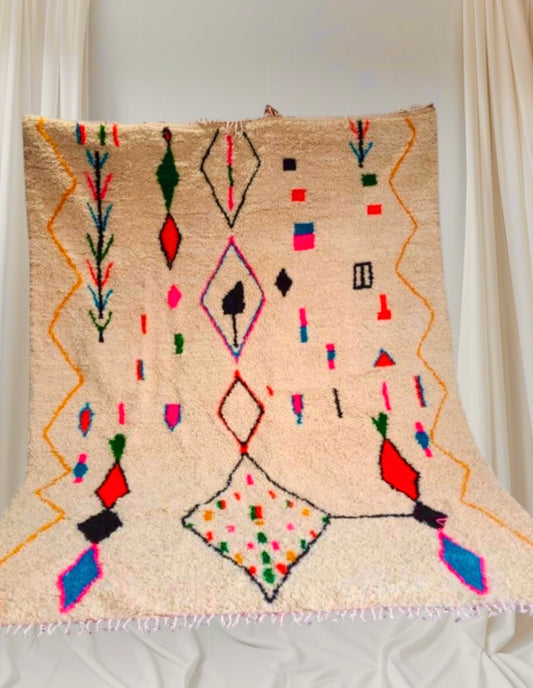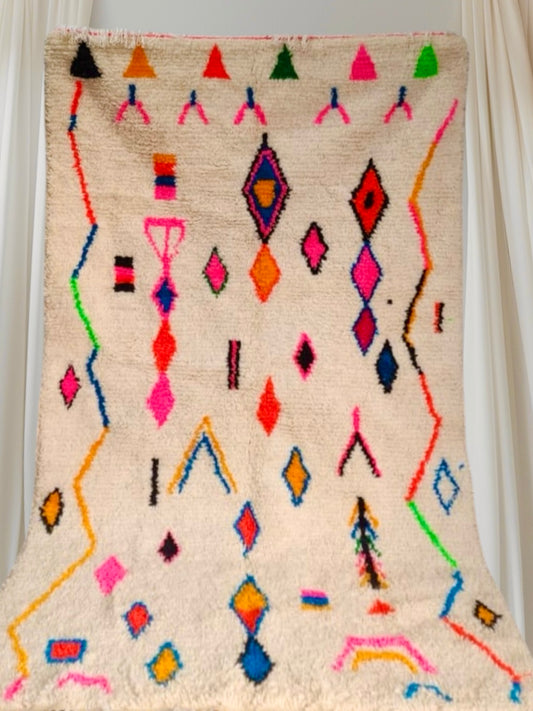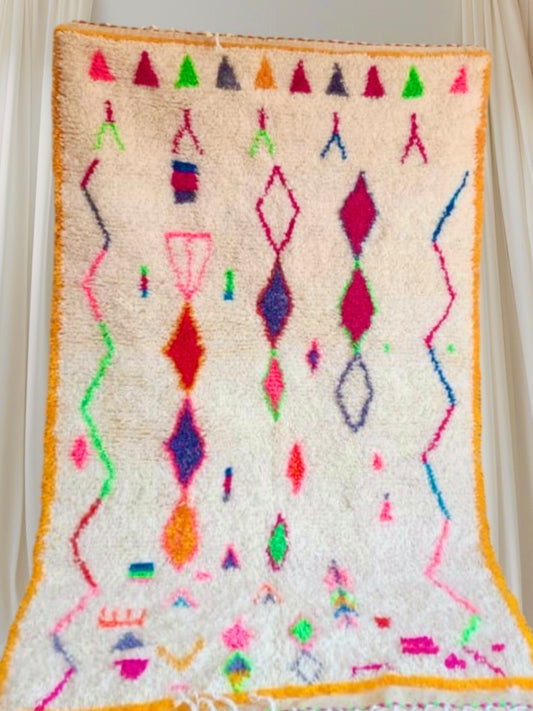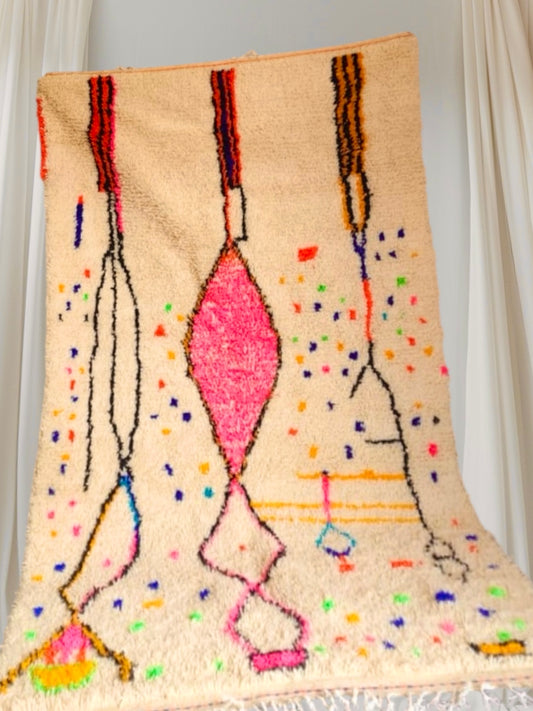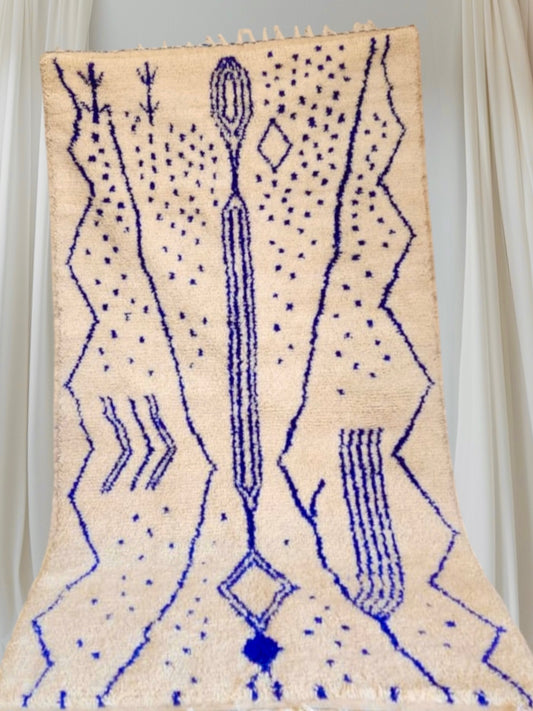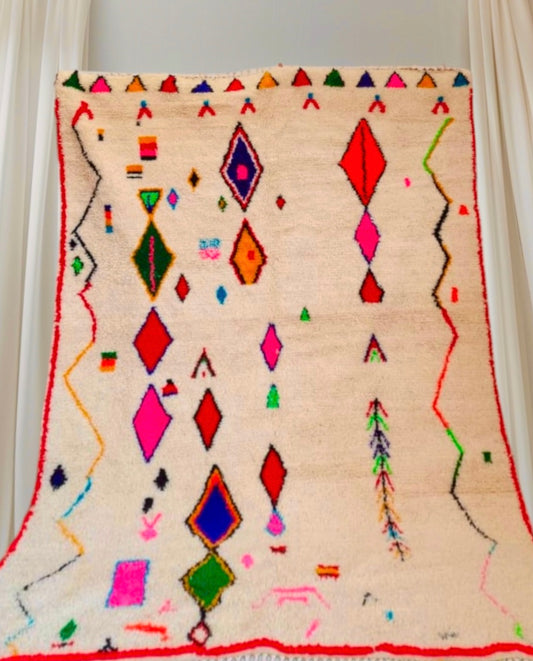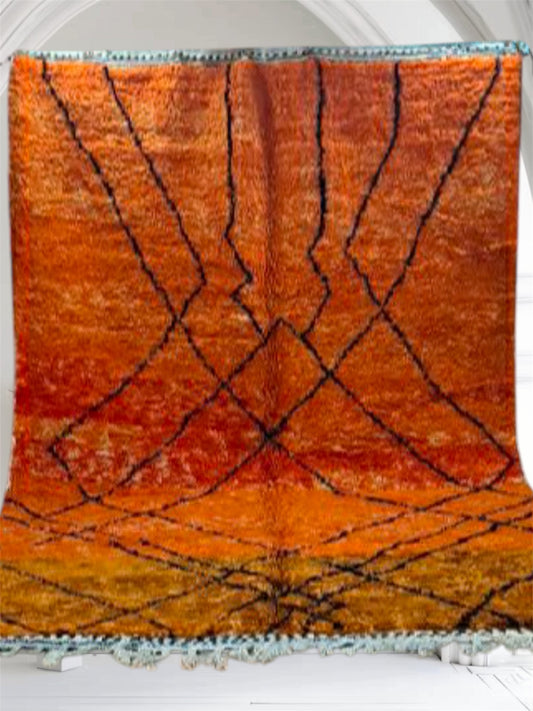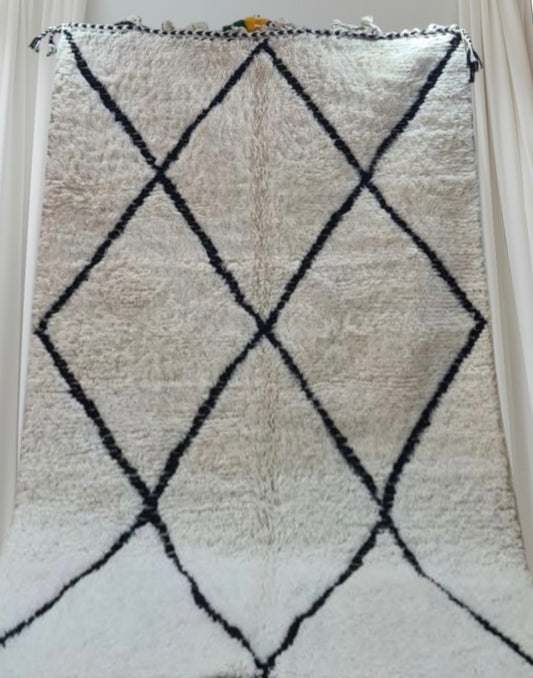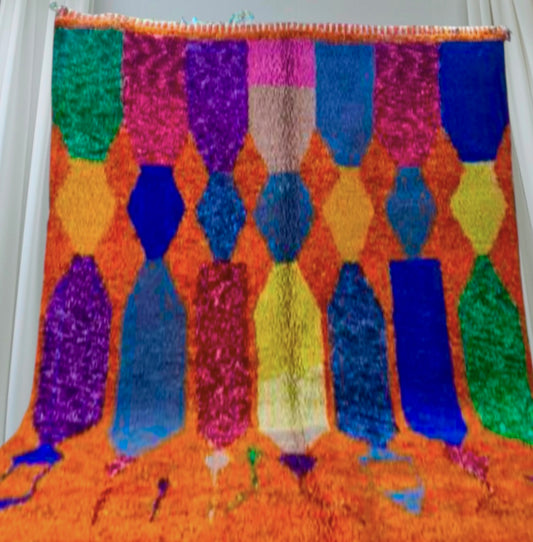CARPET BERBER
Our Berber rugs are handmade in Morocco from sheep's wool. The whole process is 100% handmade and traditional. We make the carpet in our country from the Atlas Mountains and collaborate with more than 500 Atlas weavers wh o reflect the authenticity of our carpets.

Production of custom-made Berber carpets
Do you have a specific wish or need? Did you fall in love with a model on the site but it is no longer in stock, is it too big or too small? Would you like to have a rug made to your own design? Everything is possible! We have the Berber rug of your dreams made for you in your dimensions, colors and patterns, by the women weavers in the Moroccan mountains who work with me
The best handmade carpet in Morocco
Carpet paradise is a selection of unique pieces that carry a story. A story told through the artistic expertise of Amazigh women, a traditional creative process and 100% craftsmanship,
Participate on our scale in the perpetuationof ancestral know-how
Discover our splendid colorful rug, a true work of artisanal art. Each rug is passionately handcrafted in our own carpet de ali baba taghazout cooperative, located in the heart of the majestic Atlas Mountains in Morocco. Made from 100% natural wool from local sheep, this rug embodies the beauty of nature. The colors, all natural, reflect the richness of Moroccan cultural heritage. Each thread is carefully woven to create a vibrant color palette that will brighten up your interior. Our colorful rug is much more than just a decorative object, it is an expression of traditional Moroccan craftsmanship and the creativity of our artisans. Treat yourself to a unique piece, rich in color and authenticity, with our handmade rug
shearing wool from sheep
At the beginning of spring, when nature dons its green mantle, and covers the mountains, plains and meadows with all kinds of colors as if they were a painting drawn by the fingers of a creative artist, the “shearing” season (Telsi in Amazigh) begins; it is that authentic custom of the Amazigh traditions par excellence, where the wool of the sheep is sheared by specialists in this field, as the precision of the scissors excels between their fingers and the ram or lamb rests… in their arms, and everyone in the stable is enchanted by their melody; they are people called “Ijlamn” where the sound of their shears is accompanied by the sound of praise and glorification of God Almighty, and the singing of songs of joy and prosperity that are received in their own distinctive melody, so the ululations quickly rise and joy blows in every direction. The wool of each ram after it is sheared is called “Elis” where each one is collected and tied separately.
washing sheep wool
Natural plant-based dyes have been used for centuries to create vibrant, environmentally friendly colours for sheep wool. If you are interested in knowing how nature colours
1. Indigo – The Classic Blue Dye
Indigo is one of the most popular natural dyes. Extracted from the leaves of the indigo plant, this dye is known for producing rich, deep blue shades. It is often used in denim and other cotton fabrics.
Plant Source: Indigofera tinctoria (Indigo Plant)
Colour: Blue
2. Madder Root – For Red and Orange
Madder root is used to make a variety of red, pink and orange colours. It has been used for centuries and is one of the oldest known plant dyes.
Plant Source: Rubia tinctorum (Madder Plant)
Colour: Red, pink, orange
3. Turmeric – Bright Yellow Dye
Turmeric is widely used to produce a bright, vibrant yellow colour. It is easy to work with and is a long-lasting natural dye.
Botanical Source: Curcuma longa (Turmeric Root)
Color: Yellow
4. Hibiscus – Bold Purple Dye
Hibiscus flowers give off a gorgeous purple hue that can be used to dye natural fabrics like cotton and silk. It’s perfect for creating unique, bold shades.
Botanical Source: Hibiscus rosa-sinensis
Color: Purple
5. Walnut – For a Rich Brown
Walnut shells (the outer part of the walnut) are an excellent source for deep, rich browns. They’re a great choice for rustic or earthy color palettes.
Botanical Source: Walnut Tree (Juglans regia)
Color: Brown
6. Cochineal – Natural Red Dye
Although derived from insects, cochineal is often included in lists of natural dyes because it’s primarily used as a plant dye. It creates beautiful shades of red and pink.
Plant Source: Aloe Vera (used to grow cochineal)
Color: Red, Pink
7. Onion Skins – for yellow and brown shades
Onion skins can be used to create a range of colors, from light yellow to brown, depending on how the dye is processed.
Plant Source: Allium cepa (Onion)
Color: Yellow, Brown
How to Use Natural Dyes?
Prepare the sheep wool: Start by washing the sheep wool to remove any oils or dirt.
Prepare the dye: Boil the plant parts (roots, leaves, flowers, etc.) in water to extract the color.
Dye: Soak the sheep wool in the dye bath for several hours, depending on the intensity of the color we want
Set the dye: Use alum-like material supplied to help set the dye on the sheep wool and ensure the color lasts longer.
Natural dyeing is a sustainable and innovative way to add beautiful and unique colors to sheep wool. Whether you're interested in textiles for fashion or home decor, plant-based dyes provide a rich, environmentally friendly alternative to synthetic dyes.
With her delicate fingers she picks up the wool threads of sheep, spins the most wonderful pieces of handmade carpets, and departs far from this world. She is the "Barbarian" woman who is and still is the companion of the loom and the threads.

